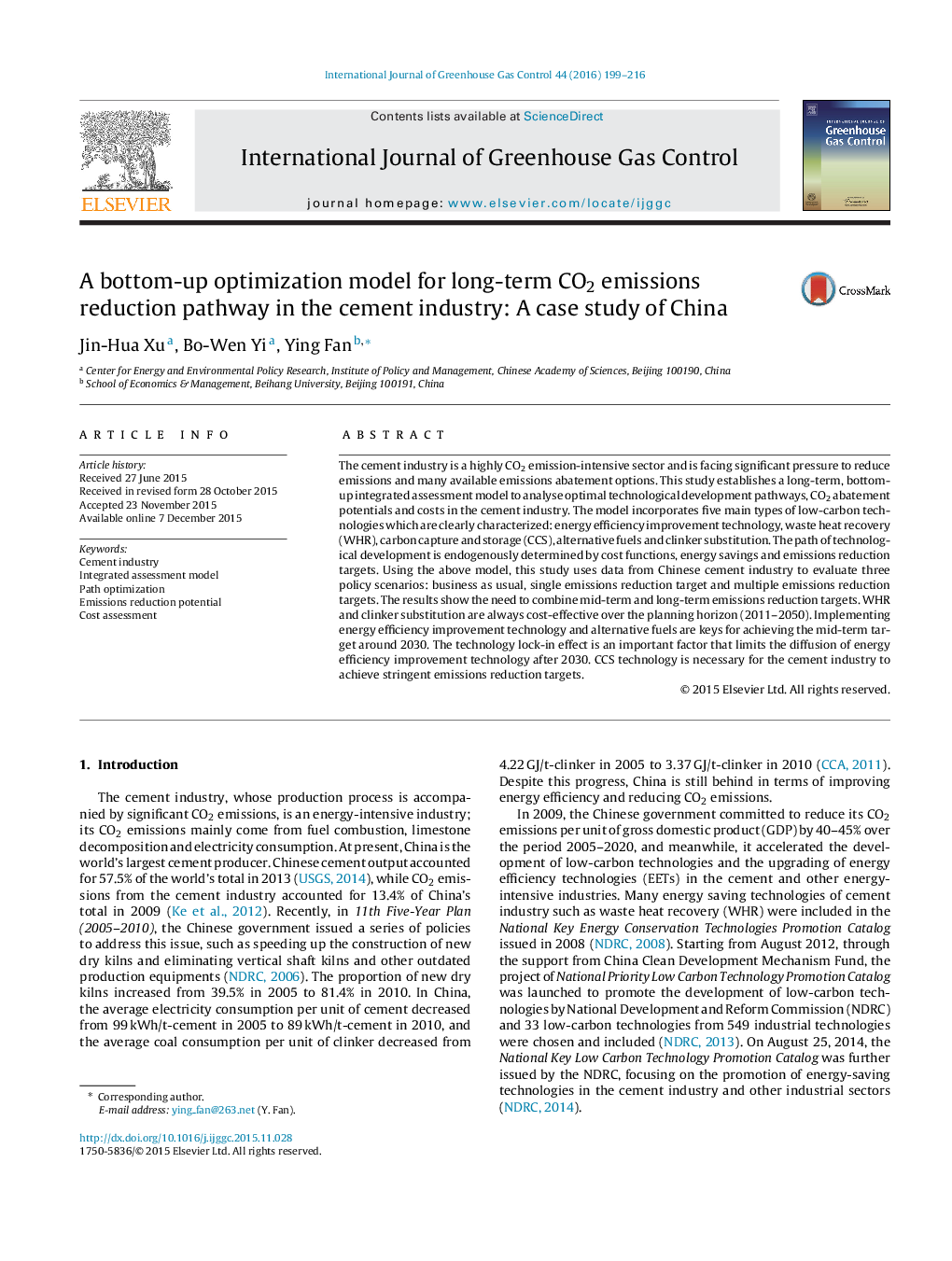| کد مقاله | کد نشریه | سال انتشار | مقاله انگلیسی | نسخه تمام متن |
|---|---|---|---|---|
| 1742961 | 1521977 | 2016 | 18 صفحه PDF | دانلود رایگان |
عنوان انگلیسی مقاله ISI
A bottom-up optimization model for long-term CO2 emissions reduction pathway in the cement industry: A case study of China
دانلود مقاله + سفارش ترجمه
دانلود مقاله ISI انگلیسی
رایگان برای ایرانیان
کلمات کلیدی
موضوعات مرتبط
مهندسی و علوم پایه
علوم زمین و سیارات
فرآیندهای سطح زمین
پیش نمایش صفحه اول مقاله

چکیده انگلیسی
The cement industry is a highly CO2 emission-intensive sector and is facing significant pressure to reduce emissions and many available emissions abatement options. This study establishes a long-term, bottom-up integrated assessment model to analyse optimal technological development pathways, CO2 abatement potentials and costs in the cement industry. The model incorporates five main types of low-carbon technologies which are clearly characterized: energy efficiency improvement technology, waste heat recovery (WHR), carbon capture and storage (CCS), alternative fuels and clinker substitution. The path of technological development is endogenously determined by cost functions, energy savings and emissions reduction targets. Using the above model, this study uses data from Chinese cement industry to evaluate three policy scenarios: business as usual, single emissions reduction target and multiple emissions reduction targets. The results show the need to combine mid-term and long-term emissions reduction targets. WHR and clinker substitution are always cost-effective over the planning horizon (2011-2050). Implementing energy efficiency improvement technology and alternative fuels are keys for achieving the mid-term target around 2030. The technology lock-in effect is an important factor that limits the diffusion of energy efficiency improvement technology after 2030. CCS technology is necessary for the cement industry to achieve stringent emissions reduction targets.
ناشر
Database: Elsevier - ScienceDirect (ساینس دایرکت)
Journal: International Journal of Greenhouse Gas Control - Volume 44, January 2016, Pages 199-216
Journal: International Journal of Greenhouse Gas Control - Volume 44, January 2016, Pages 199-216
نویسندگان
Jin-Hua Xu, Bo-Wen Yi, Ying Fan,